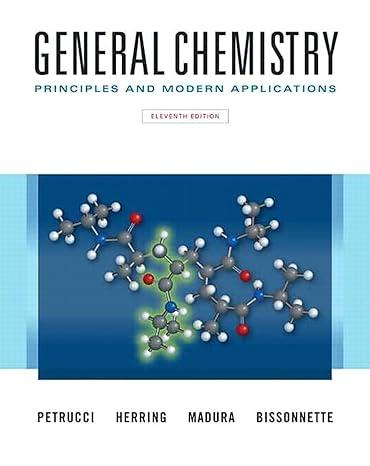(A) The amount of potassium chlorate, KClO 3 , in a 0.1432 g sample was determined as...
Question:
(A) The amount of potassium chlorate, KClO3, in a 0.1432 g sample was determined as follows. The sample was dissolved in 50.00 mL of 0.09101 M Fe(NO3)2 and the solution was acidified. The excess Fe2+ was back-titrated with 12.59 mL of 0.08362 M Ce(NO3)4 solution. What is the percentage by mass of KClO3 in the sample? Chemical equations for the reactions involved are given below.
ClO3-(aq) + Fe2+(aq) → Cl-(aq) + Fe3+(aq) (not balanced)
Fe2+(aq) + Ce4+(aq) → Fe3+(aq) + Ce3+(aq)
(B) The amount of arsenic, As, in a 7.25 g sample was determined by converting all the arsenic to arsenous acid (H3AsO3), and then titrating H3AsO3 with 23.77 mL of 0.02144 M KMnO4. What is the percentage by mass of As in the sample? An unbalanced expression for the titration reaction is H3AsO3(aq) + MnO4-(aq) → H3AsO4(aq) + Mn2+(aq).
Step by Step Answer:

General Chemistry Principles And Modern Applications
ISBN: 9780132931281
11th Edition
Authors: Ralph Petrucci, Jeffry Madura, F. Herring, Carey Bissonnette





